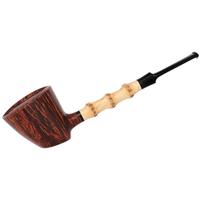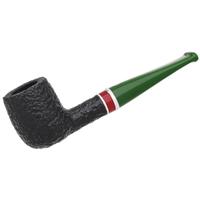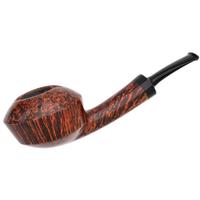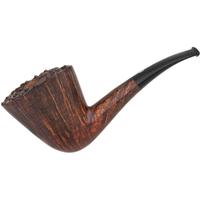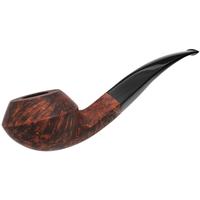thank you, KC!Really nice stem you have designed there!!
3d Stem
- Thread starter Scottmi
- Start date
You are using an out of date browser. It may not display this or other websites correctly.
You should upgrade or use an alternative browser.
You should upgrade or use an alternative browser.
A maker can call their pipes anything they want. The web site pipes show a cant but I didn't grok that in your photos.
I still maintain it's a stack! (And I've been wrong once before!)
I still maintain it's a stack! (And I've been wrong once before!)
I mean, as long as you're printing - go nuts! Let's see twin helix to louvered vents, directed up. Print it clear and watch the smoke chase itself around the track.
Pipe cleaners be damned. Just print another one when it goes sour!
Pipe cleaners be damned. Just print another one when it goes sour!
Thank you for a most informative replyNicely done!
Acrylic and Vulcanite are the most common because they offer the best properties for workability and durability. Polyester, vinyl, and Bakelite were all once commonplace on the market but not the go to for various reasons. Bakelite dust is highly toxic, so working it is hazardous to your health, these days it's overly expensive, and it's nearly impossible to bend without special equipment. Polyester was used by a few pipe brands in the US from the 60-80's but it has to molded instead of cut from rod stock, its nearly impossible to work or polish. It offers little in the way of durability and the colors tend to look washed out.
There are a lot of meer carvers using both Poly and Vinyl stems today but the problem with both is that they are nearly impossible to further shape once they are molded and this poses a lot of problems for briar pipe makers.
Vulcanized rubber and extruded acrylic are the two that offer best workability, durability, and eye appeal. They can be pre-formed or cut from rod stock. If pre-formed, they can be further worked, they offer the highest shine, they resist tooth damage better, and are the easiest to bend. They are the ones that offer the fewest drawbacks.
Juma makes great stems but it also has it's limitations. There are some people that are doing some pretty cool things with cast resin stems but I have not worked with any of them so I couldn't say if they're any good, but they look cool.
JumaIs there not a middle ground between comfort and durability?
Any updates on anyone 3D printing stems? Types of non-toxic / heat resistant materials used?
My son just bought himself a 3D printer, so naturally my mind went towards all the possible pipe applications that could exist.
I’ve got a couple pipes whose stems are toast, and I’d love to be able to custom make some new ones.
Any help would be appreciated.
My son just bought himself a 3D printer, so naturally my mind went towards all the possible pipe applications that could exist.
I’ve got a couple pipes whose stems are toast, and I’d love to be able to custom make some new ones.
Any help would be appreciated.
Still very happy with my PETG stem and is the material of choice for such application, imho. You can seek out particular brands that are specifically noted to be nontoxic or "food safe."
a quick search gave me this:
a quick search gave me this:
Food safe non toxic petg for 3d printing
Based on the provided search results, here are some key findings and recommendations:- PETG is considered food-safe as a raw material: PETG (Polyethylene Terephthalate Glycol) is a polymer that meets FDA requirements for food contact applications. However, the 3D printing process and filament brand can influence its food safety.
- Look for additive-free and virgin PETG filaments: To ensure non-toxicity, opt for PETG filaments that are free from additives and dyes made from non-food-safe chemicals. Virgin PETG filaments (undyed) are also a good choice.
- Check for certifications and labels: Some PETG filaments are officially labeled as food-safe. Look for certifications like FDA compliance or EU food contact regulations.
- Brand recommendations:
- Carbon Brand: Offers a Certified Food Grade PETG 3D Printer Filament, lab-tested and FDA compliant.
- Innofil3D: Provides food-safe PETG filaments with FDA approval.
- Fillamentum: Offers PETG filaments that meet EU food contact regulations.
- Nozzle material: Brass nozzles can leach toxic substances into your 3D print. Consider using stainless steel or other non-toxic nozzle materials.
- Printing environment: Use a well-ventilated area and consider a HEPA-filtered enclosure or air purifier to minimize emissions and improve air quality when printing with PETG.
- Post-processing: Ensure proper cleaning and sanitizing of 3D printed parts to prevent bacterial growth.



